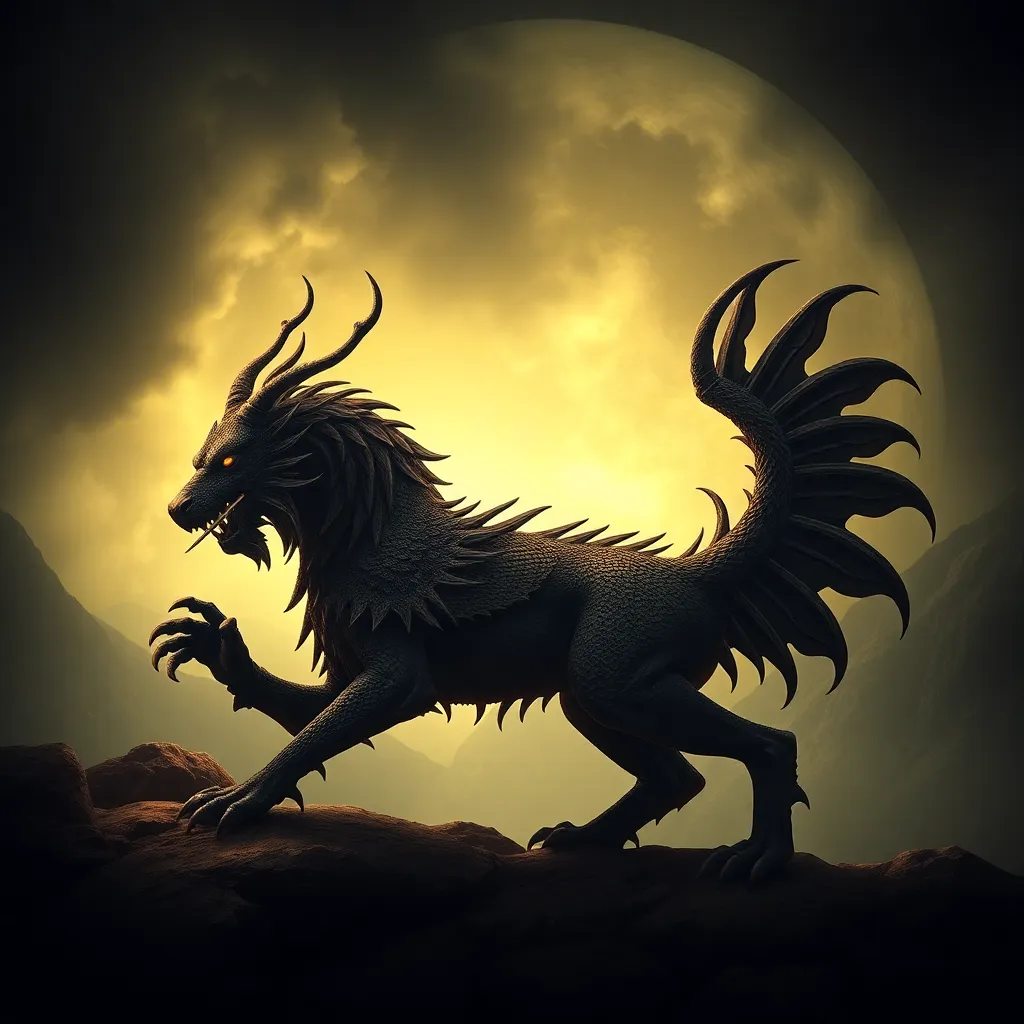The Manticore’s Legacy: Tracing its Journey from Persia to Europe
I. Introduction
The Manticore, a captivating hybrid creature with the body of a lion, the face of a man, and the tail of a scorpion, has fascinated cultures across the globe for centuries. Its mythical nature and fearsome reputation make it a significant part of folklore and mythology. Understanding the Manticore’s journey from its origins in ancient Persia to its role in European literature provides insight into how myths evolve and adapt over time.
This article aims to trace the historical journey of the Manticore, exploring its origins, adaptations across various cultures, and its lasting legacy in modern times. By examining its representation in ancient texts and medieval bestiaries, we can better appreciate the creature’s symbolic significance and enduring impact on contemporary storytelling.
II. Origins of the Manticore in Ancient Persia
The Manticore’s roots can be traced back to ancient Persia, where it was depicted as a fierce and formidable creature. In Persian mythology, the Manticore symbolized danger and the unknown, embodying the fears and challenges faced by humanity.
Described as having the body of a lion and the head of a man, the Manticore was also believed to possess a tail that could shoot deadly spines. This terrifying combination made it a subject of both awe and fear in ancient texts.
- Historical Texts: The writings of Ctesias, a Greek physician and historian, provide one of the earliest accounts of the Manticore. His descriptions captured the imagination of his contemporaries and laid the groundwork for the creature’s mythos.
- Artifacts: Archaeological discoveries, including carvings and sculptures, depict the Manticore, highlighting its significance in Persian culture.
The Manticore played a vital role in Persian folklore, often used as a cautionary figure in stories that warned against hubris and the consequences of underestimating one’s adversaries.
III. The Manticore in Ancient Greek Literature
As the Manticore’s legend spread beyond Persia, it was adapted and interpreted by Greek historians and writers. The Greeks were fascinated by the exotic tales of far-off lands, and the Manticore fit perfectly into their pantheon of mythical beasts.
Key literary sources, such as Ctesias’ “Indica,” mention the Manticore, often emphasizing its fearsome nature. Greek interpretations added layers to the creature’s mythology, blending it with their own mythological traditions.
- Influence of Greek Mythology: The Manticore’s image was influenced by other mythological creatures, reflecting the Greeks’ penchant for hybrid beings like the Chimera and the Sphinx.
- Symbolism: In Greek culture, the Manticore often symbolized barbarism and the dangers of the unknown, serving as a metaphor for the fears of the civilized world regarding the wild and untamed.
IV. The Spread of the Manticore Myth Across Cultures
The Manticore’s narrative was significantly impacted by trade and conquest, which facilitated the exchange of ideas and stories across cultures. As merchants and conquerors traveled, they brought tales of the Manticore to new audiences, resulting in various adaptations.
In regions such as India and Arabia, the Manticore was integrated into local mythologies, often taking on new characteristics and symbolic meanings. This cross-cultural exchange enriched the Manticore’s legacy.
- Adaptations: In Indian mythology, similar creatures emerged, while Arabian tales spoke of monstrous beings with traits reminiscent of the Manticore.
- Medieval Texts: During the medieval period, the Manticore continued to appear in bestiaries, where it was often depicted as a creature to be feared, yet respected.
V. The Manticore in Medieval European Bestiaries
In medieval Europe, the Manticore was integrated into bestiaries, which were compilations of descriptions and moral lessons about various animals, both real and mythical. The Manticore was often included in these texts, where it served as a cautionary symbol.
The symbolism associated with the Manticore in medieval literature was complex, often embodying themes of danger, treachery, and the duality of man and beast.
- Moral Lessons: The Manticore’s fearsome nature was used to impart lessons about the dangers of pride and the importance of humility.
- Artistic Representations: Medieval artists depicted the Manticore in illuminated manuscripts, showcasing its unique features and emphasizing its mythological significance.
VI. The Manticore’s Influence on Renaissance Thought
During the Renaissance, the Manticore underwent a reinterpretation as scholars and artists revisited ancient texts and sought to reconcile myth with emerging scientific ideas. This period saw a renewed interest in the natural world and the myths that shaped human understanding of it.
The Manticore found its place in Renaissance literature and art, often symbolizing the tension between the known and the unknown.
- Literature: Writers of the time, influenced by classical texts, included the Manticore in their works, sometimes as a metaphor for human flaws and societal issues.
- Art: Artists rendered the Manticore, capturing its fearsome essence while exploring its symbolic meanings in the context of human nature.
VII. Modern Interpretations and Cultural Impact
In contemporary times, the Manticore has experienced a resurgence in literature and media, particularly within the fantasy genre. Its unique combination of features makes it a compelling subject for storytelling.
The creature has become a symbol in modern fantasy, representing the complexities of human nature and the struggles between good and evil.
- Contemporary Literature: The Manticore appears in various novels, games, and films, showcasing its versatility as a mythical being.
- Cultural Legacy: The Manticore’s legacy continues to influence popular culture, serving as an archetype for hybrid creatures and moral lessons.
VIII. Conclusion
Tracing the Manticore’s journey from its origins in Persia to its prominent role in European folklore reveals the creature’s rich and varied legacy. The Manticore has evolved through cultural exchanges, adaptations, and reinterpretations, reflecting the fears, hopes, and moral lessons of the societies that embraced it.
The enduring legacy of mythical creatures like the Manticore highlights the significance of folklore in understanding human culture and history. As we continue to explore and reinterpret these legends, we gain valuable insights into our collective psyche and the timeless stories that bind us together.




